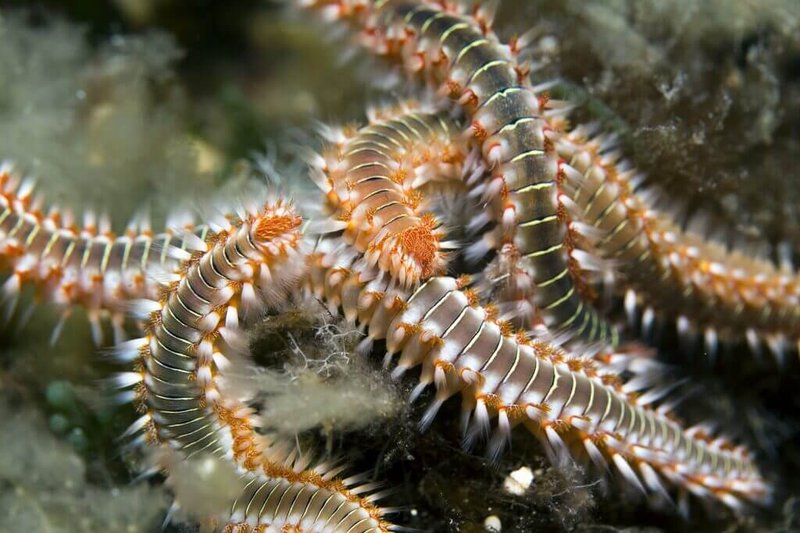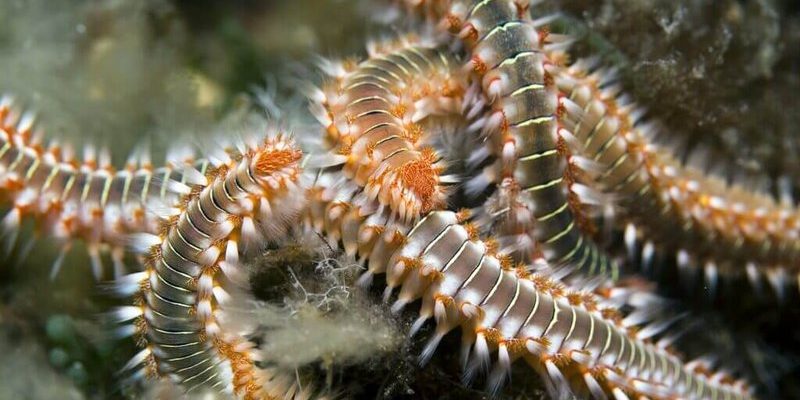
So, what exactly are bristle worms? Picture them as the tiny, squirmy cousins of earthworms, but with bristles that can trigger a surprising sting if you’re not careful. While some bristle worms are friendly and even helpful in breaking down waste, others can wreak havoc by overpopulating or eating corals and other marine life. Let’s dive into how to identify these pests and what you can do if you find them in your tank.
What Are Bristle Worms?
Bristle worms belong to a larger group called polychaetes, which are segmented worms typically found in marine environments. They have a long, skinny body – think spaghetti with legs – covered in tiny hair-like structures called bristles or setae. These bristles can make handling them tricky, as they’re designed for defense. If you touch one, it might sting or cause irritation to your skin, so be cautious!
You might wonder why they’re essential to your aquarium. Some bristle worms act as scavengers, munching on leftover organic matter and helping keep the tank clean. However, as with any good thing, moderation is key. A sudden surge in their population can be a sign of overfeeding or poor tank conditions.
In terms of appearance, bristle worms can vary in color, ranging from sandy brown to bright red or even green. Most species grow between 4 to 6 inches long, but some can reach lengths of 10 inches or more. The key to spotting the **pest species of bristle worms** lies in their behavior and physical traits.
Identifying Pest Bristle Worms
So, how do you tell the difference between helpful bristle worms and the ones you want to keep at bay? Start by observing their behavior. Pests often move actively during the day, unlike the non-pest species, which tend to be more of a night owl. If you notice these worms openly wandering around your tank during daylight hours, it might be time to take a closer look.
Another telltale sign of **pest bristle worms** is their thick, robust bodies. Unlike their harmless cousins, which are often slender and delicate, the pests usually have a bulkier body structure. These bigger bristle worms can easily overpopulate your tank and disrupt the ecosystem.
Also, keep an eye out for their feeding habits. Pests tend to wreak havoc on corals and live rock, leaving behind little nibbles. If you notice any damage to your marine plants or a sudden decline in other marine life, it might be a clue that these worms are to blame.
Common Types of Pest Bristle Worms
While there are numerous species of bristle worms, some are more notorious for being pests in aquariums. Here are a couple of the most common culprits:
- Fire Worms: These bright red or orange worms are often found in reef tanks. Their name comes from their painful sting, which can be quite uncomfortable if you’re not careful. They have a segmented body with longer bristles, making them easily recognizable.
- Red Wigglers: These worms may look harmless, but they can quickly overrun a tank if not monitored. They are more robust and tend to multiply rapidly, making them a nuisance and potential threat to your corals.
Knowing which types of bristle worms are pests versus harmless can save your aquarium from being overrun. It’s worth taking the time to learn the differences so you can act quickly if needed.
How to Control Pest Bristle Worm Populations
If you suspect that your tank has been invaded by **pest species of bristle worms**, don’t panic! There are several strategies you can use to keep their populations in check.
First, consider tweaking your feeding habits. Overfeeding is a common cause of worm outbreaks. Make sure you’re only providing what your marine life can eat in a few minutes. Any leftovers can lead to a surge in bristle worm numbers as they thrive on the excess food.
Second, bolster your cleanup crew. Adding more scavengers, like hermit crabs or shrimp, can help control the bristle worm population. These little buddies will munch on leftover food and compete for resources, making it tougher for bristle worms to thrive.
If the situation gets out of hand, you might need to resort to mechanical removal. Using a pair of tweezers, gently remove the worms you can see. Just remember to wear gloves to avoid any stings. Be persistent, as this might take several attempts to reduce their numbers effectively.
When to Seek Professional Help
Sometimes, it can feel like you’re fighting a losing battle against **pest species of bristle worms**. If the infestation seems overwhelming despite your best efforts, it might be time to call in the professionals. Local aquarium shops or marine biologists can provide expert advice or even help with more advanced solutions.
You might also consider using specialized products designed for removing pests from aquariums. Just be cautious and read the labels to ensure you don’t harm your other valuable marine life.
Maintaining a healthy aquarium requires vigilance—especially when it comes to spotting pests like bristle worms. By understanding their behavior and characteristics, you can keep your tank thriving.
Remember, not all bristle worms are bad; some play a valuable role in breaking down waste. But knowing how to identify and manage the pests will help you keep your aquatic environment in balance. So, the next time you spot a wriggling worm, don’t just shrug it off; take a closer look and act accordingly. Your underwater world will thank you!

